Media | Articles
Values of the fourth-gen Monte Carlo SS are on the move
We’re still about three weeks away from Movemeber, when millions of men fill out their upper lips or beards, partly to raise awareness of men’s health issues and partly for fun. Turn the clock back about 40 years, however, and every month was mustache month. Not just for Tom Selleck and Freddie Mercury, but for guys all over the United States. And quite often, that lip foliage peered out above the steering wheel of a Monte Carlo SS.
Despite the glitz and glamour implied by its name, a Monte Carlo has always been more at home in Missouri than in Monaco, but that doesn’t mean it isn’t cool. Built on GM’s rear-drive mid-size G-body platform—which also included the Buick Regal, Chevy El Camino, Olds Cutlass, and Pontiac Grand Prix—it’s a sporty-looking but not exactly fast piece of “mustache muscle” that can be had on a budget. Surprisingly, though, that budget is a lot higher than it was just a few short years ago.

The first, coke-bottle-styled Monte Carlos arrived in 1970, and by 1981 the Monte Carlo was already in its fourth generation. It was smaller and lighter, but also roomier than the Montes of the ’70s. Although a short-lived Monte Carlo Turbo model offered boosted Buick V-6 power, and despite the Monte Carlo making a lengthy go of it in NASCAR, a more serious performance model was conspicuously absent from the roster. Performance was coming back into the coupe market, however, particularly with the launch of the Fox-body Mustang in 1979 and the all-new Chevrolet Camaro/Pontiac Firebird in 1982. For 1983, the Monte Carlo caught up when Chevrolet gave it a mild facelift and added an SS option to the lineup. It was the first Monte Carlo SS since 1971.
Buyers could choose between white or dark blue, while a small trunk spoiler, big decals, and Rally wheels let people know you spent the extra coin for an SS. Under the subtly muscular body was a Quadrajet-carbureted 305 cubic-inch small-block with aluminum intake, column shift three-speed automatic, F41 suspension, Goodyear Eagle GT rubber, and an open diff. The price was a little over $10K, and options like power windows and cruise control pushed it to about $12K.
For the 1983 cars, the 305 small-block managed 175 horsepower and 225 lb-ft of torque. Not a tire-shredder, then, but this was 1983, and those numbers were still enough to have fun with in-period. The 1984 Monte Carlo SS brought a five-horse gain and an optional limited-slip differential, while 1985 brought even bigger improvements. While the engine didn’t change, a TH200-4R 4-speed automatic and 3.73:1 rear axle made for livelier shifting and driving than the old 3.42-geared three-speed. New, optional bucket seats and floor shift gave a racier feel than the standard bench seat and column shifter, while optional T-tops let your facial hair dance in the breeze. Silver, black, white, and maroon encompassed the revised exterior color palette while gray or maroon cloth were the interior choices.
For 1986, new five-spoke alloy wheels arrived along with different graphics and a third brake light, while the only other major change over the SS’s 1983–88 production run was the Aerocoupe.
Built for 1986 and ’87 only, it followed the same aero-driven formula of NASCAR legends of the previous generation like the Dodge Daytona, Plymouth Superbird, and Ford Torino Talladega. Built to homologate a more slippery shape in the quest for every last mph on NASCAR speedways, the Monte Carlo Aerocoupe isn’t as extreme as something like a Superbird, but its unusual, sloped rear glass and revised spoiler are certainly distinctive. Chevrolet needed to sell 200 Aerocoupes for homologation and did just that in 1986, but for 1987 the company realized that plenty of folks would want to channel their inner Dale Earnhardt (who also had a mustache, of course) and drive a car that looked just like the Intimidator’s. GM obliged, selling 6052 Aerocoupes for 1987 at $16,325 apiece (about $44K in 2023 money).
The Monte Carlo went into 1988 without major changes, as it was the model’s last year before being replaced by the Lumina. As far as most enthusiasts are concerned, the Monte Carlo story mostly ends there. A new Monte Carlo SS did arrive in 2000, but it was a fat front-driver with a V-6 engine, and despite several special-edition NASCAR models, the Monte Carlos you could buy at the dealership had almost nothing in common with the cars you saw Dale and Jeff driving on Sunday afternoon.

As for fourth-gen Monte Carlos, they were very popular when new and they remain so. Although the faster and more sinister Buick Grand National gets most of the G-body glory in the eyes of collectors today, far more people walked into a Chevy dealership and bought a Monte Carlo. While just 4714 sold in 1983, sales shot up to 24,050 in 1984, then 35,484 in 1985, and peaking in 1986 at 41,164. 1987 brought a still-substantial 33,204, and 16,204 followed in 1988. Total Turbo Buick sales were less than half that.
In addition to a strong supply of cars, Monte Carlos offer plenty of room for drivers who shop at the big and tall store, and lots of parts interchange with other GM cars. Other than rust in a few key areas, leaky T-tops, and amateur-ish, why-on-earth-did-they-do-that modifications on many examples, there aren’t any major issues to look out for.
Mid-’80s Monte Carlos have never been expensive cars. But, surprisingly, they aren’t exactly cheap these days, either. The median condition #2 (“Excellent”) value currently sits at $29,400. That’s 68 percent higher than it was five years ago, and 188 percent more than it was 10 years ago. Generally, the 1985-and-later cars with floor shift, bucket seats, and cooler wheels are more sought after, and you should expect to pay a few percent more for T-tops. Despite that, there’s little variation in value, as an ’83 model is worth $28,100 at the low end while an Aerocoupe is worth $34,400 at the top of the heap.
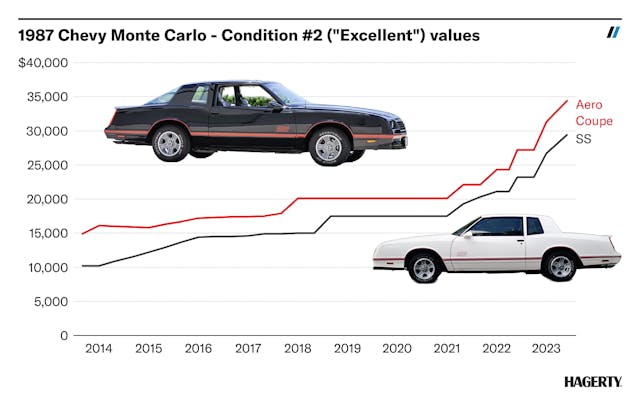
These numbers are even more surprising when we compare them to the other cars playing for the Chevrolet team in the mid-to-late ’80s. While the ’87 Buick Grand National has moved into an entirely different price point with a #2 value of $70K, the #2 value for an ’87 Camaro Z/28 is just $22,600. And for an ’87 Corvette? Just $18,500.
It doesn’t make a whole lot of sense, especially compared to the Corvette, which is much cooler to look at and will run circles around the Monte. But, as we saw with our comparison of C4 Corvettes and IROC Camaros last year, nostalgia can be a powerful market force when it comes to cars that are nearly old enough to have their own midlife crisis. Combined with the fact that there aren’t a lot of clean and unmodified examples left, it starts to become a little clearer why the best ones are getting more expensive.
Gen-Xers, who came of age when these cars were new, make up 36 percent of buyer interest for 1983–88 Monte Carlos. Millennials make up the same share. They may not exactly remember the ’80s in vivid detail, but they still play into nostalgia for that decade and, like Gen-Xers, buy these cars at a disproportionately high rate.
It’s hard to see values going up much further from here, given the wide variety of other great cars that are available in the $30K range. Which means that, as always, Monte Carlos will be a (reasonably) affordable celebration of mustache muscle.
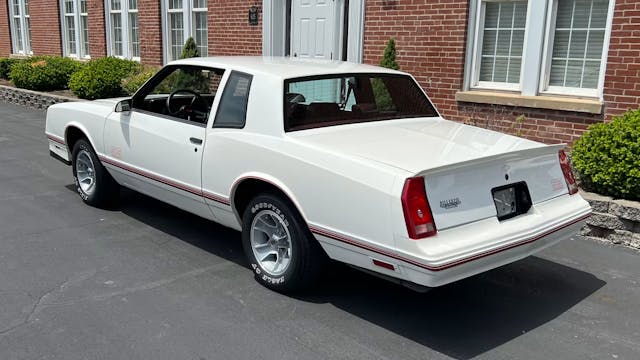
***
Marketplace
Buy and sell classics with confidence
Check out the Hagerty Media homepage so you don’t miss a single story, or better yet, bookmark it. To get our best stories delivered right to your inbox, subscribe to our newsletters.

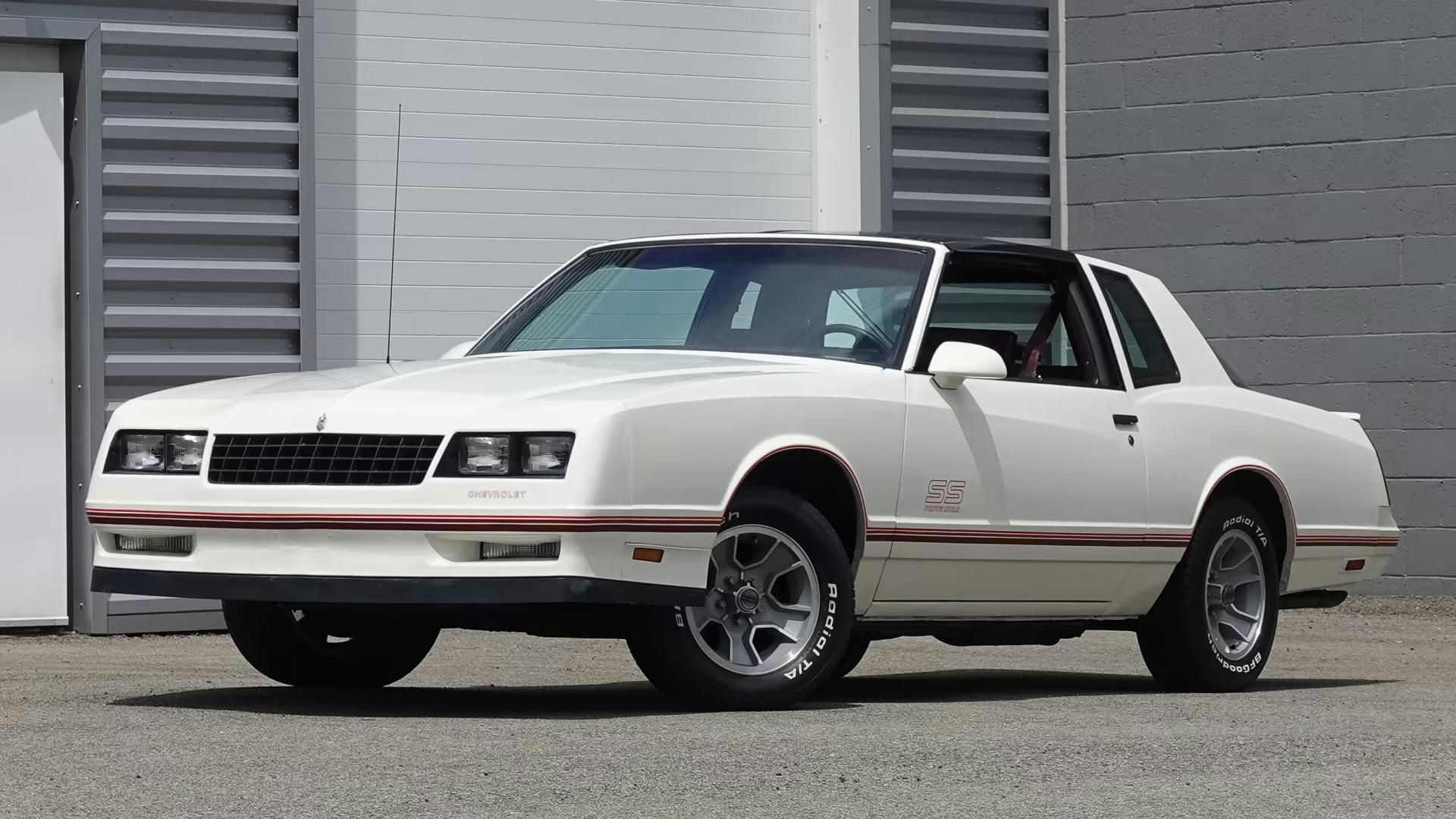
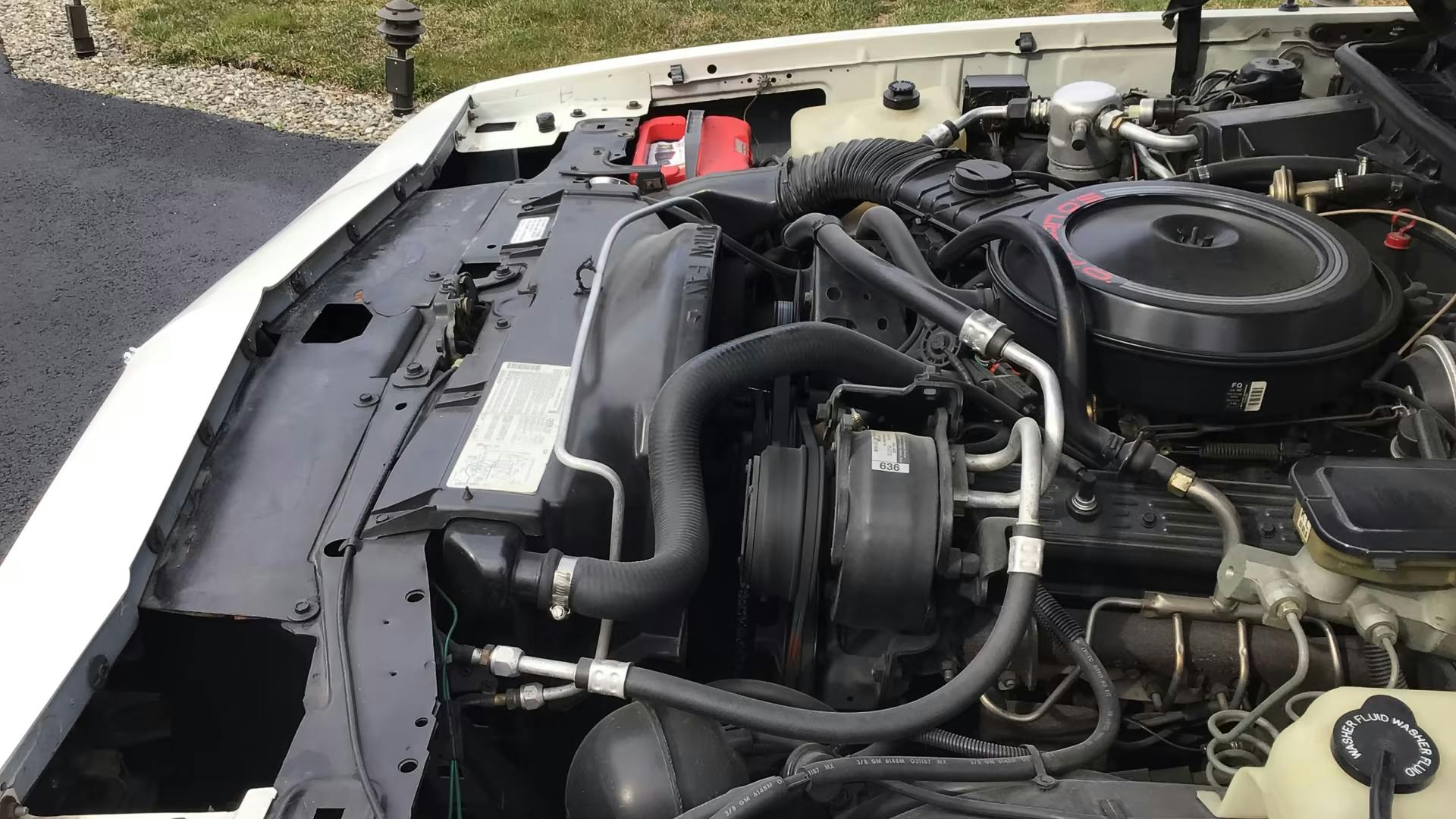
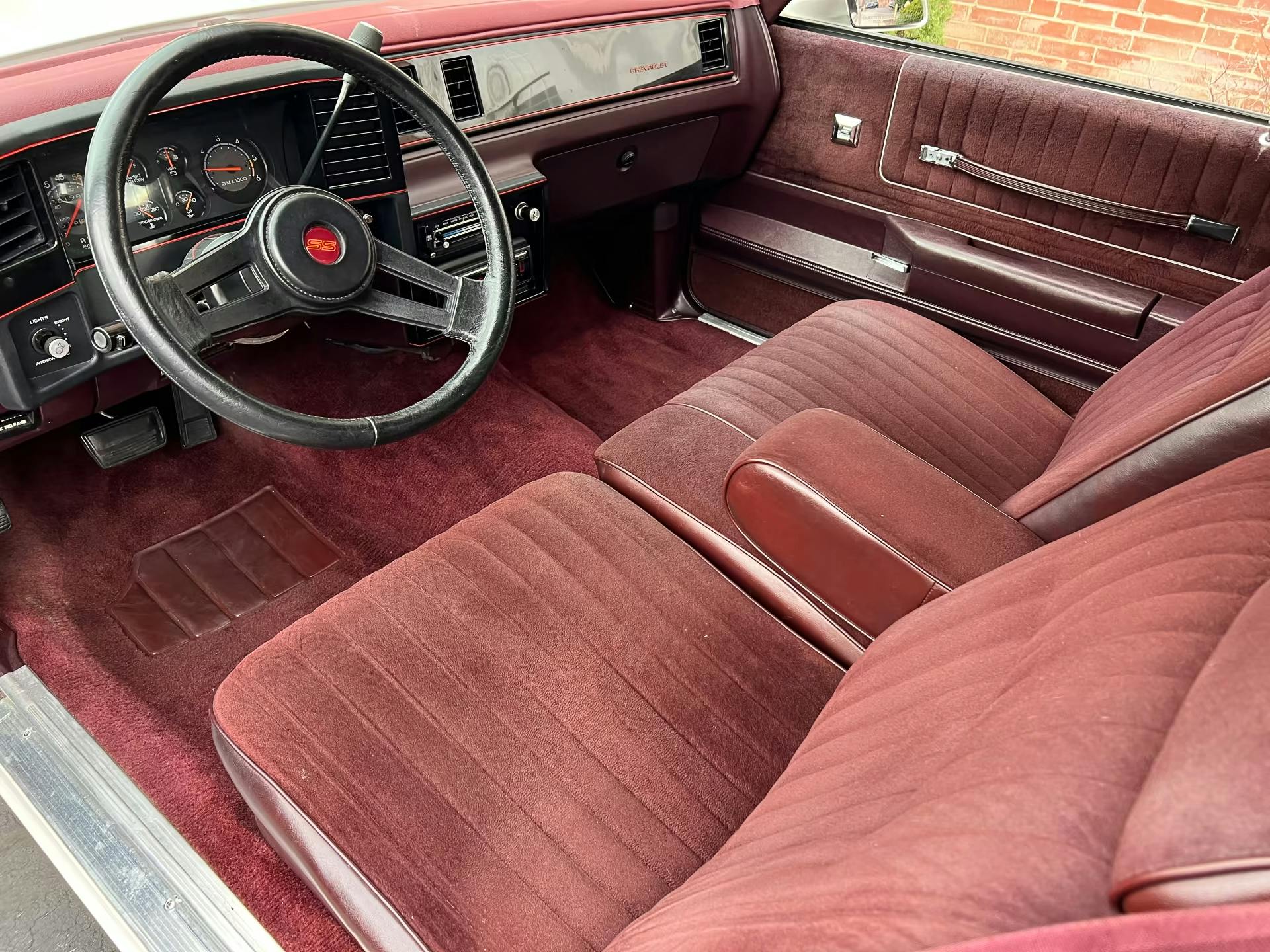
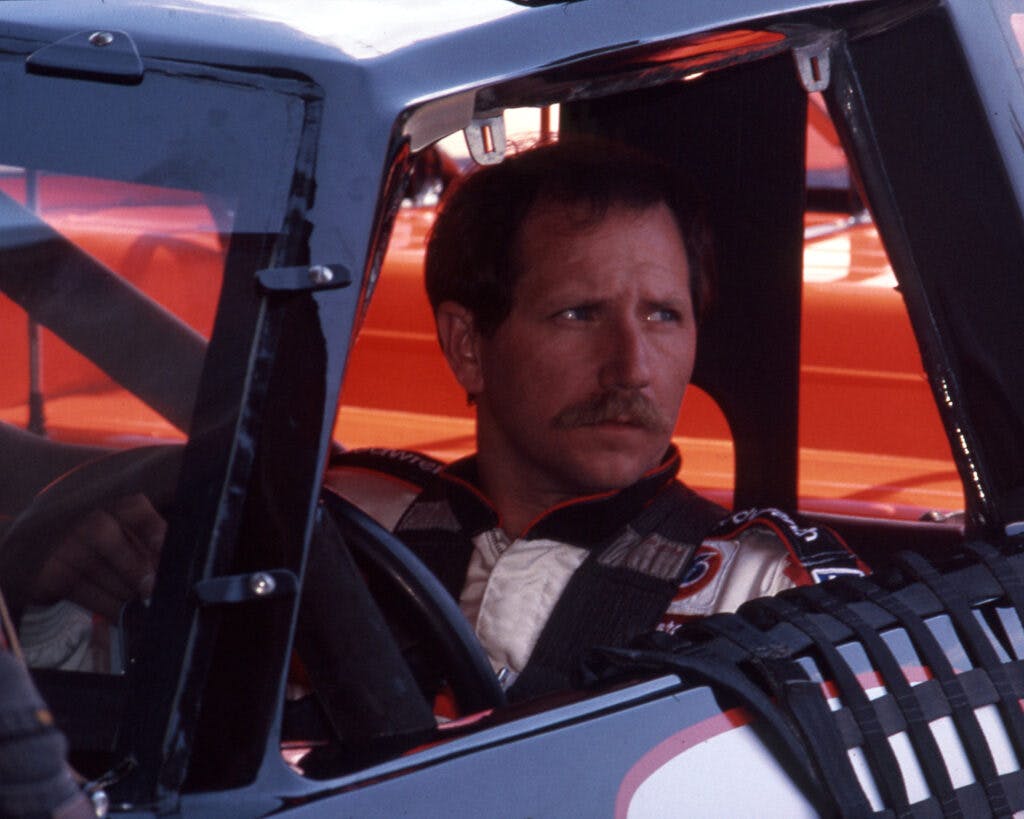
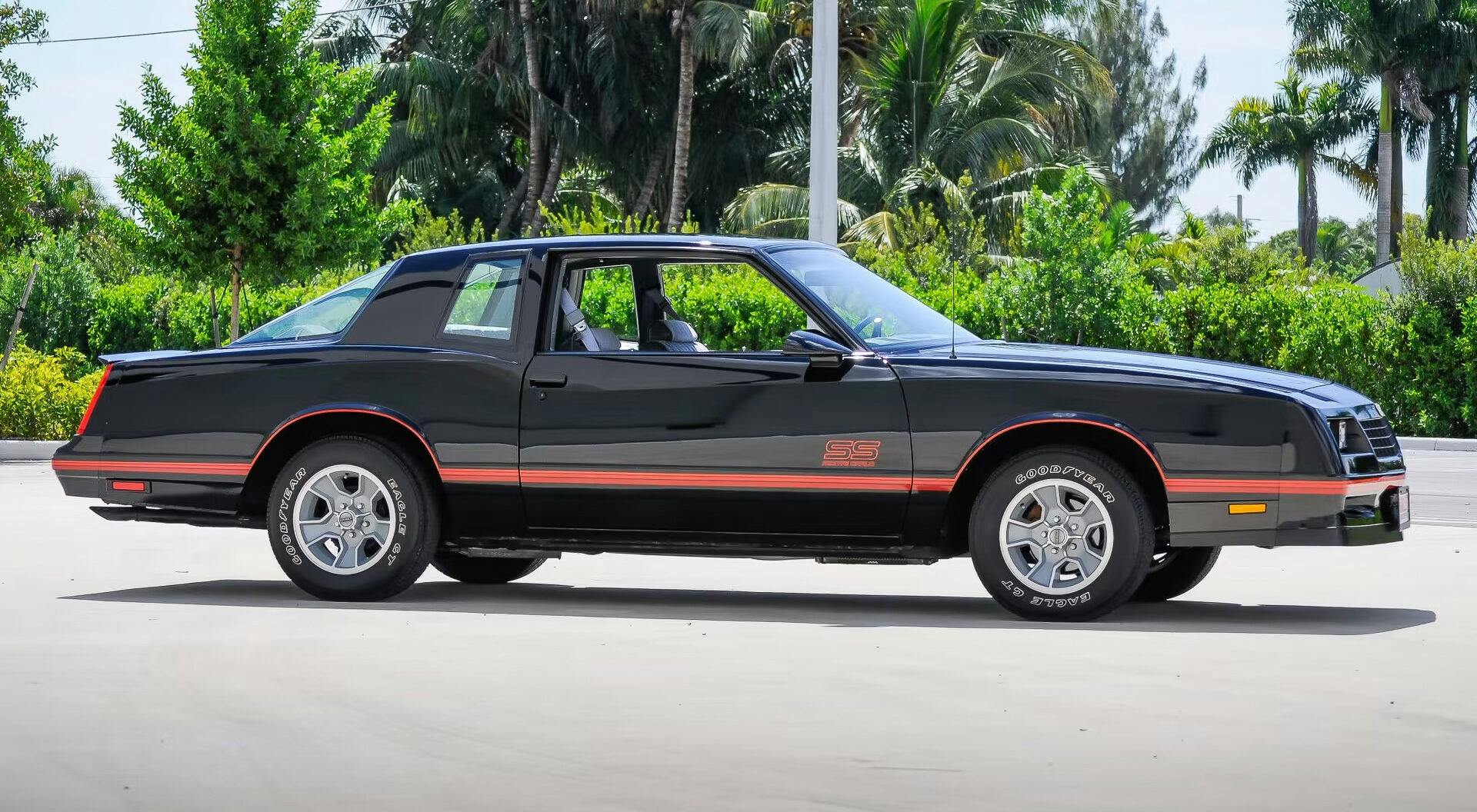
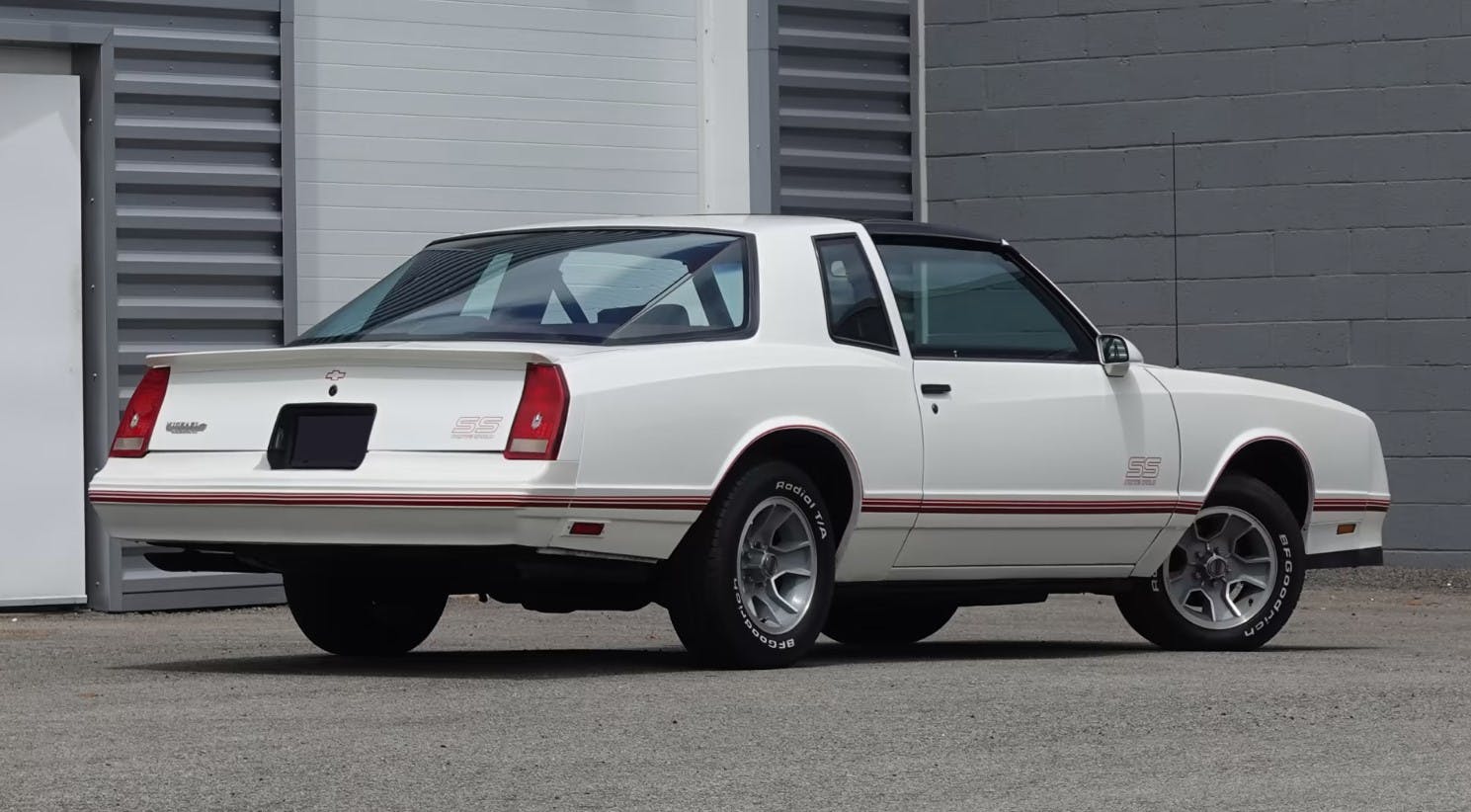

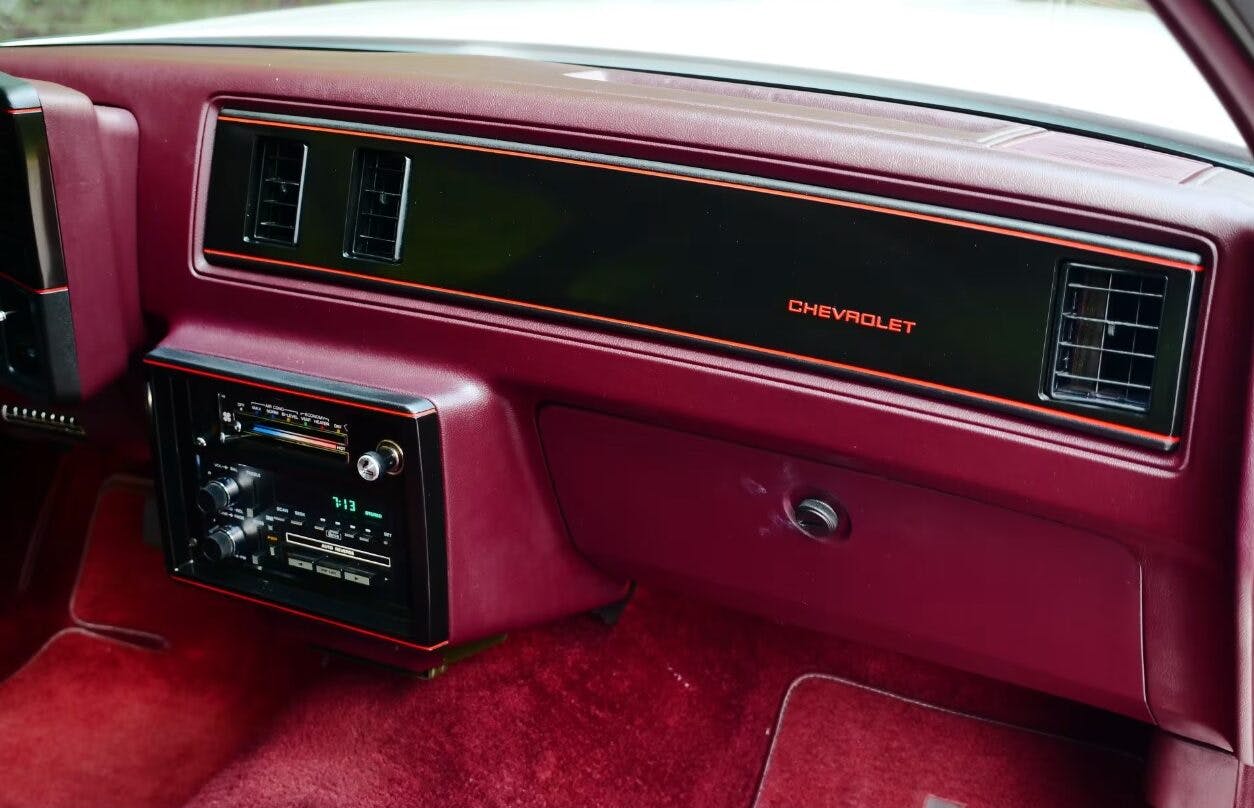









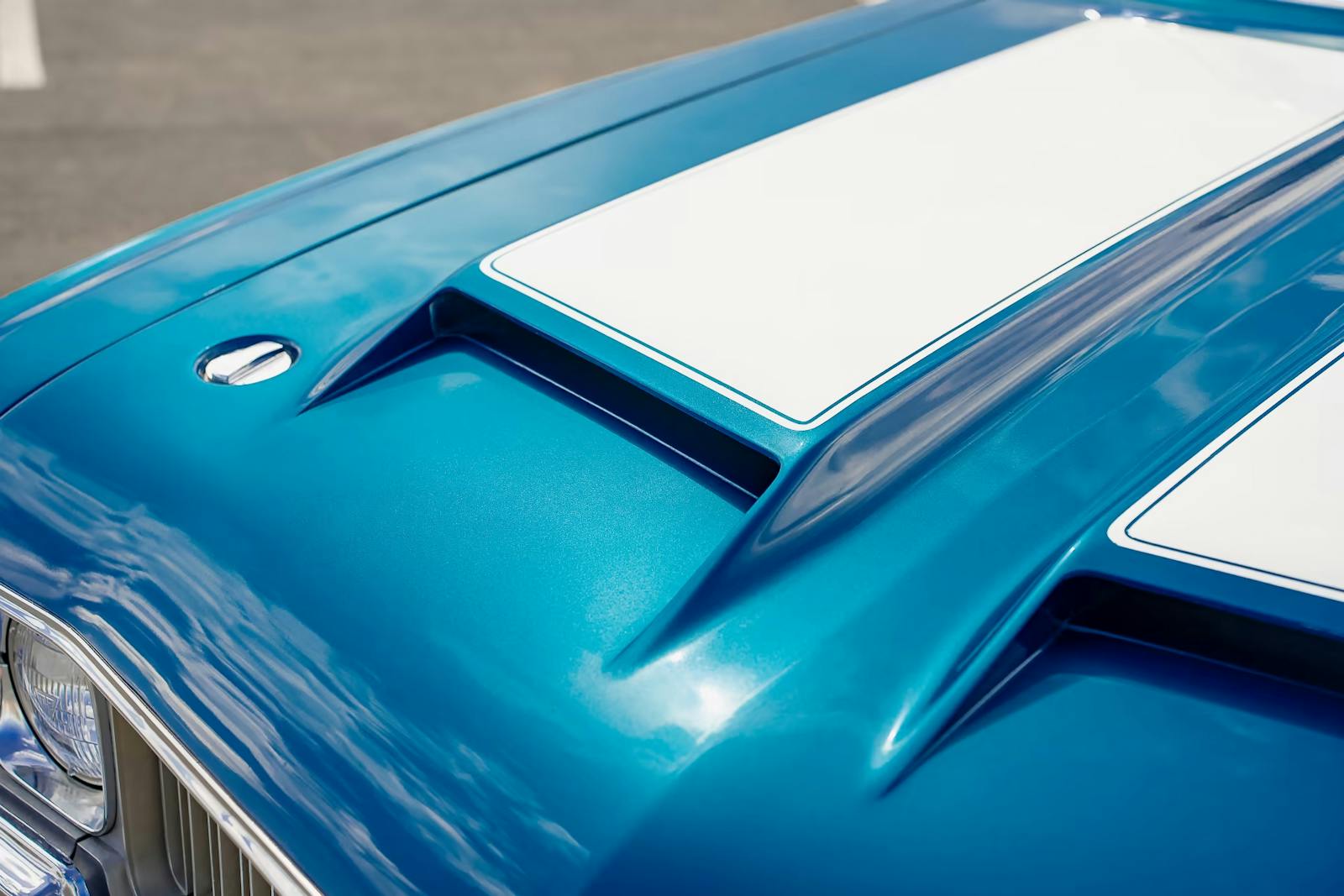

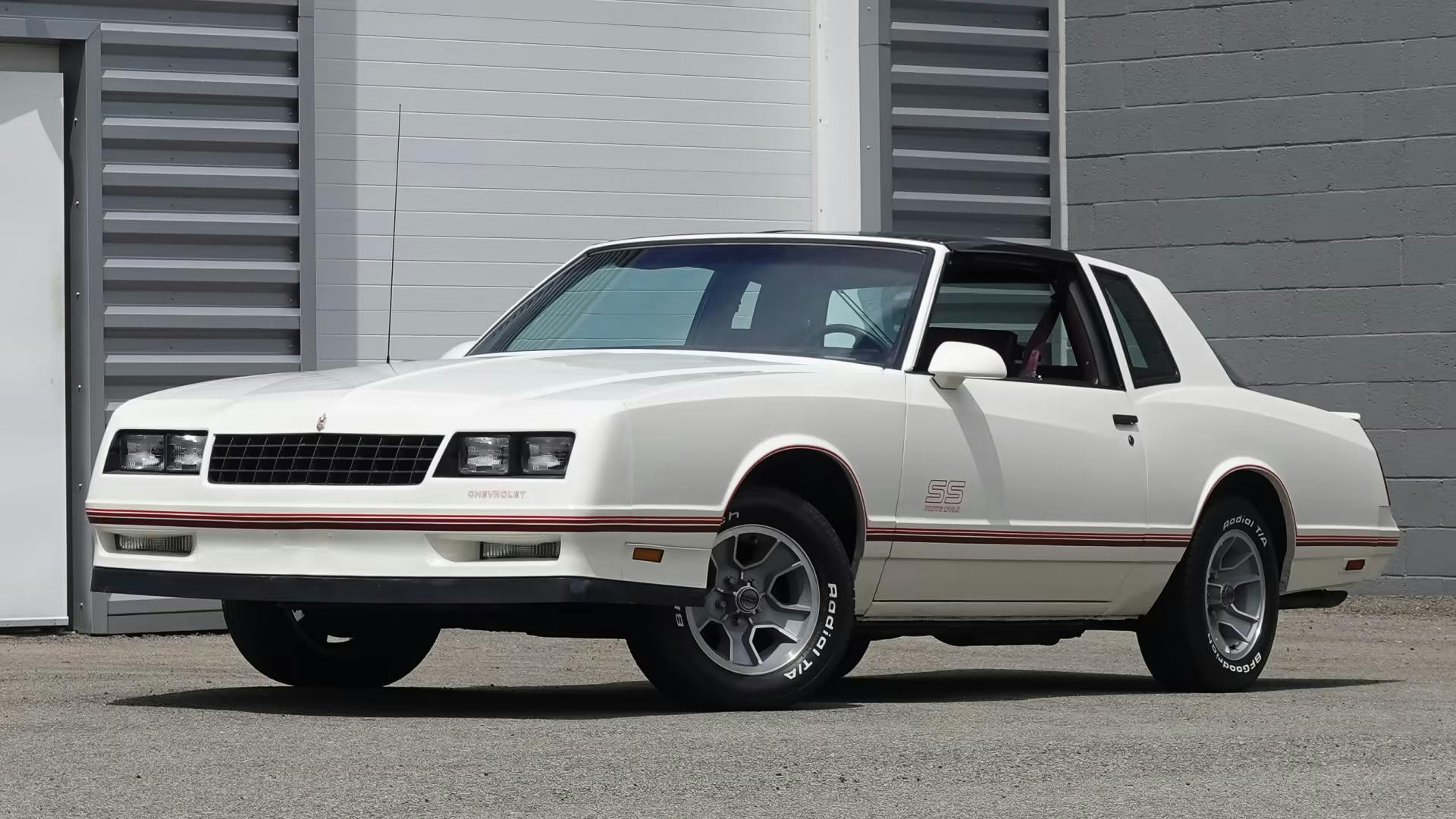








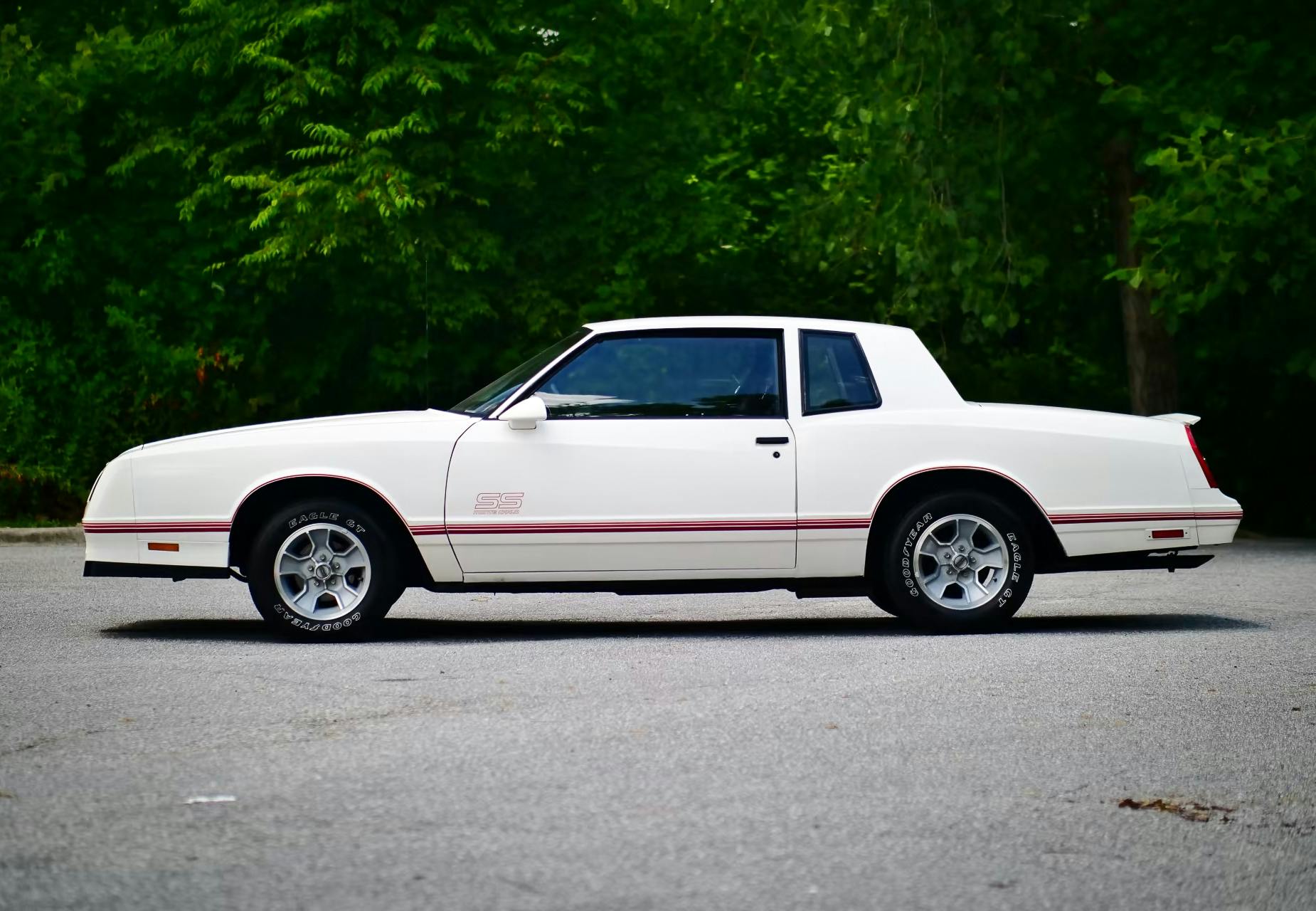
I have 3 rules for buying a car:
1) Look good in it
2) Going Fast
3) If only one of the above is available, pick 1.
My brother had a white 1983 Monte Carlo SS. First year model only had bench seats along with standard (non sporty) steering wheel. In 1984 bucket seats arrived along with the sport steering wheel and floor shifter. Always felt the 1983s were perhaps rushed into production, as they we’re a sporty looking car but with a plain interior. I also owned a 1985 MC SS, black with a red interior. My friend and I drove nonstop from Florida in what started as a rain storm but when we got to SC all snow back to home in NJ. Luckily we had Eagle GT M+S tires on the rear. By the time we got to NJ snow was at least 6 inches. Just drove accordingly for the weather, made it home with no problems. Plenty of cars would pass us up, only to find them off the road later.
Always liked the sporty GM G bodies, the one that I really regret selling was a 1984 Hurst Olds with the Lightning Rod shifters, only 3500 were made. They too have increased considerably in value the last few years.
Sorry people. These Monte Carlos are just plain ugly. Bad lines. Maybe if I was a youngster in the 80’s I might have gotten nostalgic about them.
The article didn’t mention a very rare version of the MC SS, the 1984 Monte Carlo SS made for Mexico. 350 motor, 4 speed manual trans, checkerboard style wheels and off all things the dashboard and other trim items from a Pontiac Grand Prix. Quite a few of them have been documented, there is even sales literature for the cars. Somewhere I have images/pdfs of the original sales info.
I perchaced a new 1984 blue blue bucket seats.The 84 was a problem child traded it in to a 1986 black grey int m/c ss sold with 9000 miles in 1998 great car only thing was it had a metallic black hood . Now i have a 1988 silver grey ss 1988 silver t top grey int both bucket seats cars plus a 1987 white red int bench seat base m/c ss .
i have a 1985 ss monte carlo with 37000 miles on it. it is a black car have a lot of work on it still has the 305 motor looks like a new one
I used to get those in upper Florida all the time as racetracks lower classes liked them, but no t-tops can run. Was building a couple I got for around a 1000 each in solid condition. One without a engine and bought a parts car not an ss for 300 bucks that came from up north. Had yellow writings on valve cover, someone had put a junk yard motor in it and middle numbers to letter was a G . So a SS motor, perfect for my 1 car. Other was a solid driver I bought from same guy who purchased from his neiabor that hauled boats with it. Had a bullet proof 200-r4, 200,000 on motor with no leaks. Slight damage on right rear fender well. I fixed and drove for years until my crazy X tried to take everything away from. Well she got the gold mine and I got the shaft. I got my cars, but ended up selling the other 2 montes. No where to put them. Still have other cars there, maybe, has been awhile since I’ve been down. But my good SS is picked in a barn. Body work done, ready for paint a couple fools tried to steal it. Broke quarter glass and drilled up steering column. Still need a column. Just built a 355 roller scat engine. 525 lift cam with all the goodies on it. Waiting to go in the car. And still looking for a perfect rust free drivers door. So tickles me the value has came up so much! Love the way they drive but rest of it is cosmetically cheap, hate the rear quarter extensions, cheap interior dash to console parts. Great driving car and like the look of the front! Dropped mine 2 inches and painted spoiler white to make nose look lower. All white with black headlight squares, and Drag star polished alum. Wheels. Decomputorized. Was averaging 26.9 mph with the manual set up.
I can’t seem to understand why these cars are holding or increasing their value. When they are asking as much as C3 corvettes…why would you buy a mid eighties monte?
I have a 1988 Monte Carlo
SS bought it at a car show in 2008
It has 135,000 original miles and rins great
I did have to install a new transmission a few yrs back
Lj
I’ve a 2000 SS super changed 3800#2v6